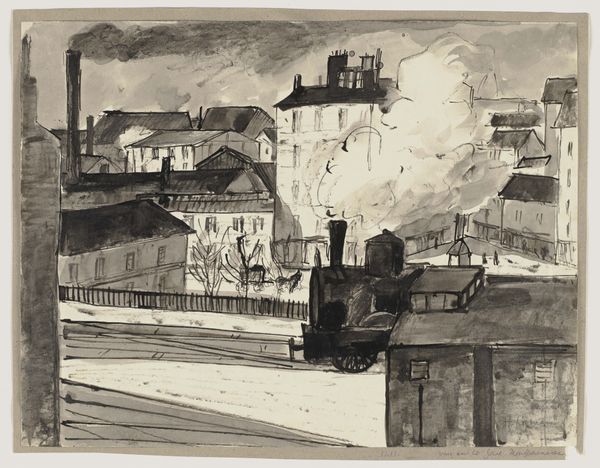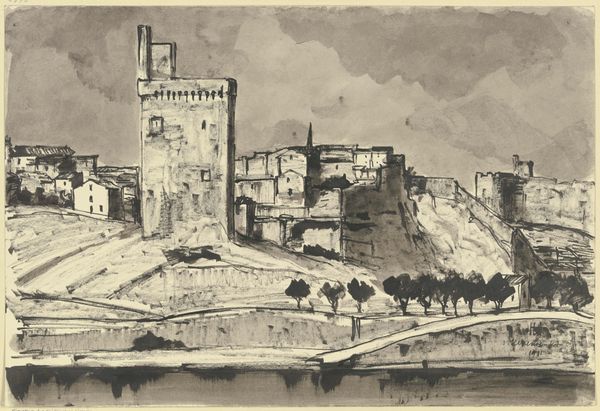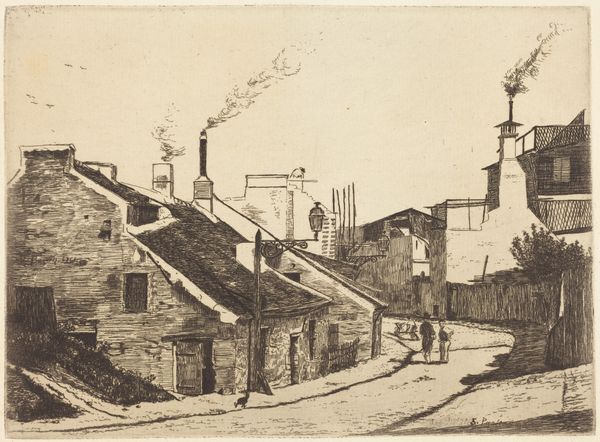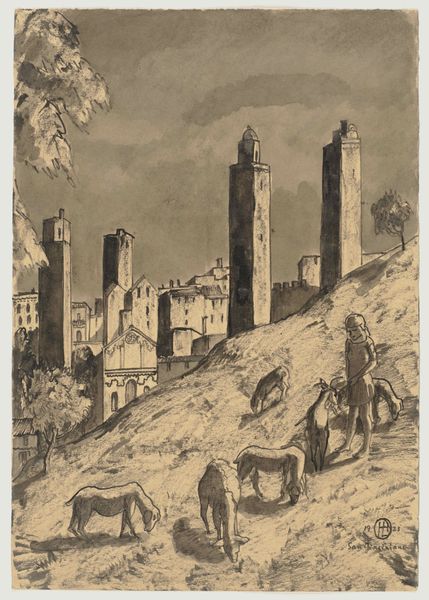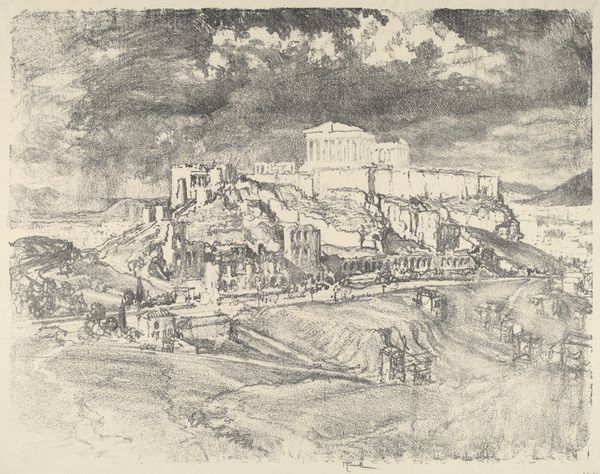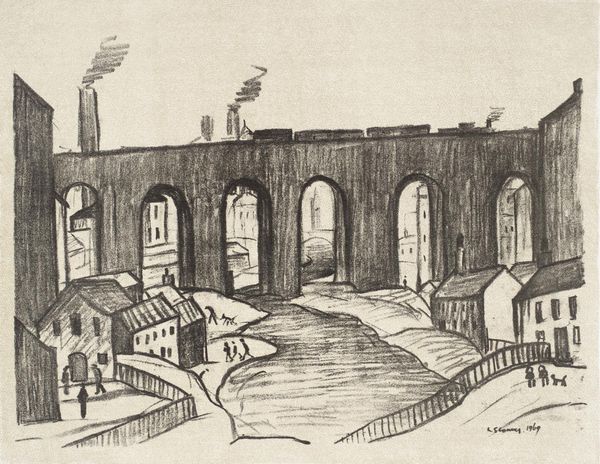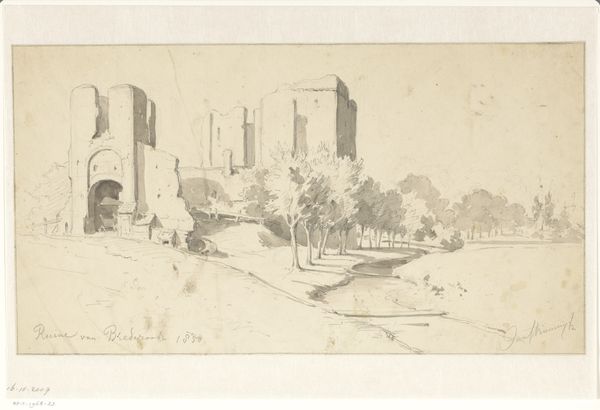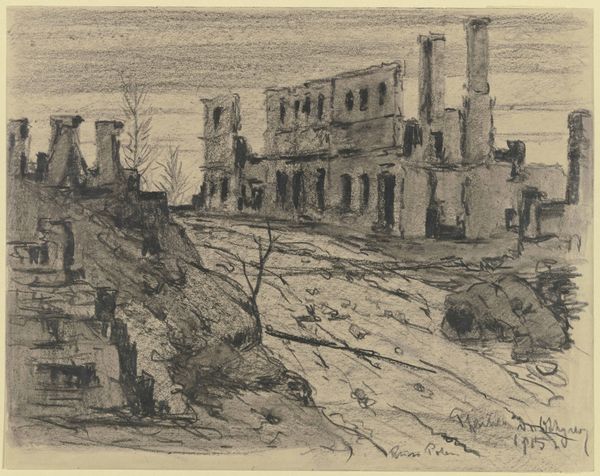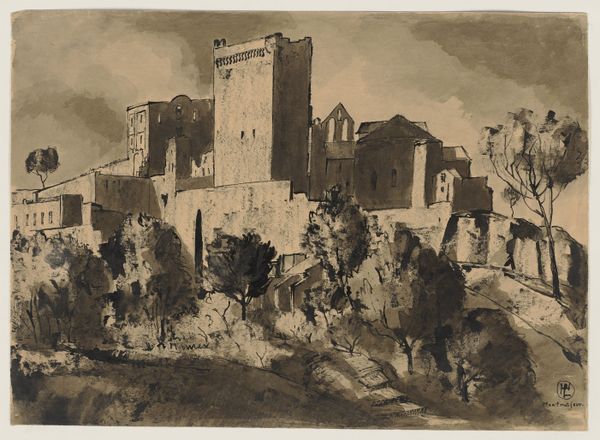
drawing, paper, ink
#
drawing
#
landscape
#
paper
#
ink
#
cityscape
Copyright: Public Domain
Curator: This drawing is Hermann Lismann's "San Gimignano" from 1923, held here at the Städel Museum. It's rendered in ink on paper. My immediate impression is one of striking verticality. Editor: Yes, the composition is dominated by those tower-like structures—they practically pierce the sky. The limited palette contributes to a somewhat somber, weighty atmosphere. What interests me are the physical properties of the ink itself and how that tonality shifts under different light as it interacts with the fibres in the paper. Curator: Right. The monochrome tones emphasize the monumentality of San Gimignano’s architecture. Lismann seems particularly concerned with the means by which civic identity is physically built and sustained. San Gimignano, famous for its medieval towers erected by wealthy families, stands as a testament to historical social hierarchies and competitive consumption through the labour required to raise these stone towers to the sky. Editor: I agree that there's a socio-economic element, but from a formalist standpoint, the stark contrast creates compelling patterns. I see repetition in those vertical forms of the towers versus the angles in the rooftops, set against the subtly graded sky, where the ink washes provide the light which enhances the sense of depth. And, there’s also a wonderful tactility about it; you sense the artist’s hand and process directly here. Curator: I appreciate your reading of the composition, however this speaks to more than visual enjoyment. These structures aren't merely geometric shapes but signs of dominance, of social ambition played out through architectural endeavor; who would occupy each structure, and whose power those buildings would showcase for those living at street level, for instance. Editor: Yes, both viewpoints offer something valuable. For me it’s the marriage between form and material: The fluid, unpredictable nature of ink somehow enlivens these solid, immovable structures. It injects movement where there is stability, hinting perhaps that nothing stands forever. Curator: It makes me reflect upon how art captures human struggles for distinction in the most tangible way—a story written in stone and interpreted on paper. Editor: And for me, it is a fascinating look into how something seemingly permanent, becomes ephemeral through its translation by means of another art form. A great way to conclude our analysis, I think!
Comments
No comments
Be the first to comment and join the conversation on the ultimate creative platform.
